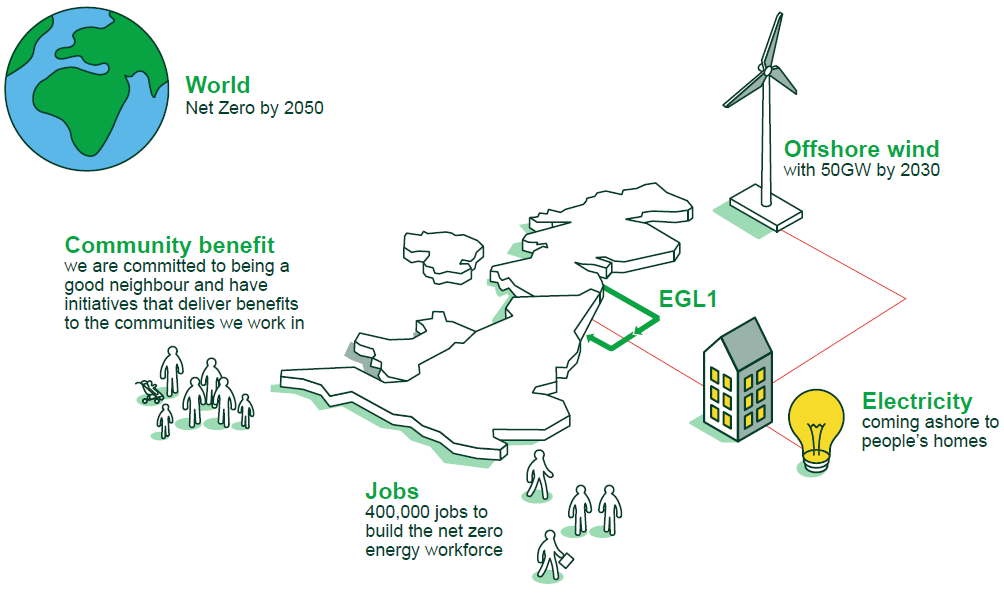What is EGL1
EGL1 is a 196km long high voltage direct current (HVDC) link. A HVDC link functions like a superhighway for electricity, allowing large amounts of power to be transmitted over long distances before being fed into the electrical grid.
The project started construction in March 2025, following full approval from local planning authorities and Ofgem. It is expected to be operational by 2029.
Why is EGL1 needed?
As the country shifts away from traditional forms of fuel to heat homes, charge vehicles and power businesses, there is greater need for home-produced, clean electricity.
By the end of this decade, the UK Government also aims for every home in the country to be powered by offshore wind and has set a 50-gigawatt offshore wind connections target by 2030.
EGL1 is a crucial part of the solution to achieve this target.
EGL1 will strengthen the electricity network between Scotland and England, allowing the increasing amounts of this home-produced renewable electricity to reach the consumers that need it.
Once complete, EGL1 will deliver enough electricity for two million homes.

History of planning applications and consultations
Before submitting its applications, National Grid held two rounds of public consultation, taking feedback from local residents and organisations on the onshore elements of its proposed project.
England
Winter 2020/2021
Marine surveys
Spring – Autumn 2021
Environmental surveys
May 24 - June 18 2021
Public consultation 2021
February 7 - 20 2022
Public webinars 2022
July 1 2022
Submission of planning application
Scotland
October - November 2021
Substation consultation
August 2021
Public consultation 2021
January 31 - February 28 2022
Converter station and marine cables consultation
July 29 2022
Submission of planning application
For more information on public consultation and planning application materials, please visit our archive section in our Documents Library.